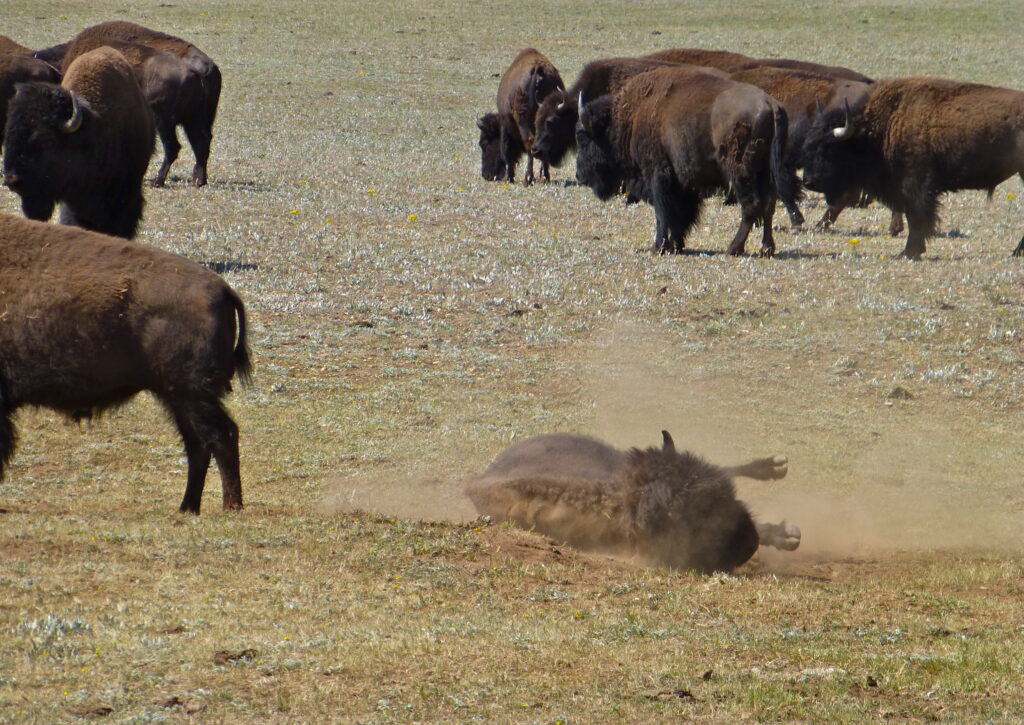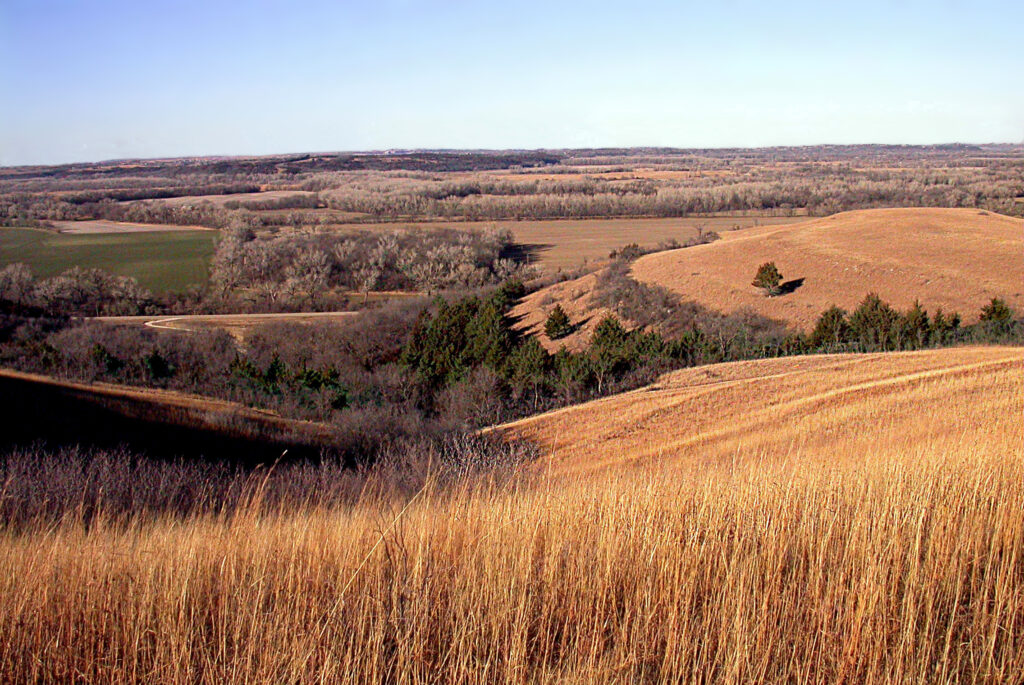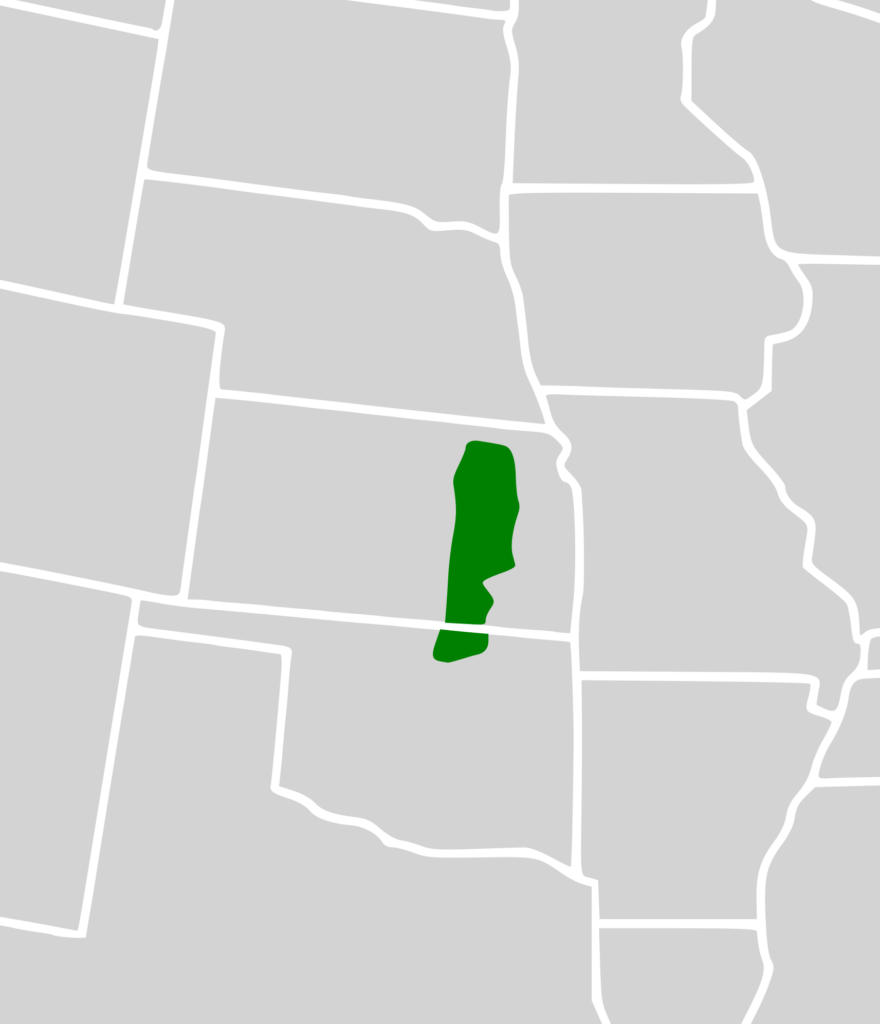How Bison Reintroduction Increases Grassland Diversity
I have had several close encounters with bison while on vacations in Yellowstone and Grand Canyon National Parks and on Catalina Island. I’m glad to say that I maintained an appropriate distance and thoroughly enjoyed studying the creatures in their habitat. Researchers have also been studying these massive herbivores in recent years and their efforts indicate that increasing bison populations may help maintain ecosystem stability.
Bison are impressively huge and muscular animals. Adults can attain a height of 2 meters (6 feet, 7 inches), a length of 3.5 meters (11 feet, 6 inches), and a weight of 1,300 kilograms (2,870 pounds). They can easily flip over a full-sized pickup truck. Bison are the largest surviving terrestrial animals in North America.
Before the arrival of Europeans in North America, 50–60 million bison roamed from Mexico to Canada’s Northwest Territories, from Virginia and Pennsylvania to Oregon and Nevada. By the late nineteenth century, wholesale slaughter of bison had driven their population down to only a few hundred individuals. Thanks to conservation efforts, the bison population in North America now stands at half a million.
Bison Promote Biodiversity
Megafauna have a top-down effect on ecosystems. Field studies show that the largest herbivorous mammals are keystone species, meaning that they significantly enhance their ecosystem biodiversity.1 They do so by selectively foraging on palatable plants that dominate in the absence of big animal grazers, which provides room for other plant species to take hold and proliferate.2 With bison roaming long distances, their waste products distribute important nutrients to those parts of their environment that would otherwise remain nutrient-poor.3
Bison contribute to increasing biodiversity in a manner unique among megaherbivores. They engage in wallowing (see figure 1) to a degree not observed in other megaherbivores. The reasons for such extensive wallowing are not yet fully understood. Bison wallow more than what’s needed to control parasites affecting their fur and skin. Extensive wallowing by such large and powerful animals creates depressions that augment habitat diversity and form moisture-catch basins in what otherwise would be flat, dry prairie.

Credit: Hugh Ross
Long-term Bison Biodiversity Field Experiments
A field experiment published in 2005 compared the effects of bison and cattle grazing on tallgrass prairie compared to tallgrass prairie that was ungrazed.4 This study showed that plant diversity changed little during the 10 years the field observations were conducted. Both the bison- and cattle-grazed prairies exhibited increases in plant diversity, with the bison-grazed prairie showing a greater increase in plant species richness than the cattle-grazed prairie.
A team of eight ecologists led by Zak Ratajczak performed a follow-up field experiment with the goal of achieving quantitative, not just qualitative, outcomes.5 Therefore, instead of prairie enclosures of just 5 hectares (12 acres), they conducted field observations in prairie enclosures that were greater than 18 hectares (more than 45 acres). They also extended their field observations from 10 years to over 27 years. All of their tallgrass prairie enclosures were in the Flint Hills ecoregion of eastern Kansas (see figures 2 and 3).

Credit: Edwin Olson, released into the public domain

Credit: Cephas, Creative Commons Attribution
Ratajczak’s team noted that compared to ungrazed prairie, bison-grazed prairie showed a 103% increase in native plant species richness. Domesticated cattle-grazed prairie showed a 50% increase.
In the previous field study there was little change in climate. However, during the 27-year study conducted by Ratajczak and his colleagues, there was a two-year-long (2011–2012) severe drought, as severe as the Dust Bowl drought of the 1930s. In fact, 2012 was the most extreme dry year on record in the state of Kansas. Ratajczak’s team observed that long-term, year-round bison grazing resulted in plant communities that were remarkably resilient to the two-year severe drought. Such was not the case for cattle-grazed and ungrazed prairie.
Creation and Creation Care Implications
The ecologists concluded that “rewilding native megafauna could help to restore grassland biodiversity” worldwide.6 They also pointed out that large-scale reintroduction of bison throughout the American and Canadian prairies could greatly mitigate the economic threats from droughts and climate change.
This research affirms that bison were wisely created and designed by God to provide for and benefit North America’s plants, animals, and humans and to ensure that the continent remains full of the creatures God created. As the psalmist declares, “How countless are your works, Lord! In wisdom you made them all; the earth is full of your creatures.7
In Genesis 1 God gave a mandate to Adam and Eve and their descendants to manage Earth’s resources for the benefit of all Earth’s life. Ratajczak’s team’s research reminds us that part of that mandate is to continue to rebuild the population of bison and extend their habitat. That rebuilding and habitat extension has the added benefit of allowing many more humans to enjoy these magnificent animals and ponder the wisdom, power, and love of their Creator.
Endnotes
- Allison Louthan et al., “Large Mammals Generate Both Top-Down Effects and Extended Trophic Cascades on Floral-Visitor Assemblages,” Journal of Tropical Ecology 35, no. 4 (July 2019): 185–198, doi:10.1017/S0266467419000142.
- Scott L. Collins et al., “Modulation of Diversity by Grazing and Mowing in Native Tallgrass Prairie,” Science 280, no. 5364 (May 1, 1998): 745–747, doi:10.1126/science.280.5364.745; Caroline A. E. Strömberg, “Evolution of Grasses and Grassland Ecosystems,” Annual Review of Earth and Planetary Sciences 39 (May 2011): 517–544, doi:10.1146/annurev-earth-040809-152402.
- David J. Augustine and Douglas A. Frank, “Effects of Migratory Grazers on Spatial Heterogeneity of Soil Nitrogen Properties in a Grassland Ecosystem,” Ecology 82, no. 11 (November 2001): 3149–3162, doi:10.1890/0012-9658(2001)082[3149:EOMGOS]2.0.CO;2. A free pdf of the entire paper is available at https://www.ars.usda.gov/ARSUserFiles/30180000/AugustinePDF/5.2001_Ecology.pdf.
- E. Gene Towne, David C. Hartnett, and Robert C. Cochran, “Vegetation Trends in Tallgrass Prairie from Bison and Cattle Grazing,” Ecological Applications 15, no. 5 (October 2005): 1550–1559, doi:10.1890/04-1958.
- Zak Ratajczak et al., “Reintroducing Bison Results in Long-Running and Resilient Increases in Grassland Diversity,” Proceedings of the National Academy of Sciences 119, no. 36 (August 29, 2022): id. e2210433119, doi:10.1073/pnas.2210433119.
- Ratajczak et al., “Reintroducing Bison,” page 1 of 7.
- Psalm 104:24.






